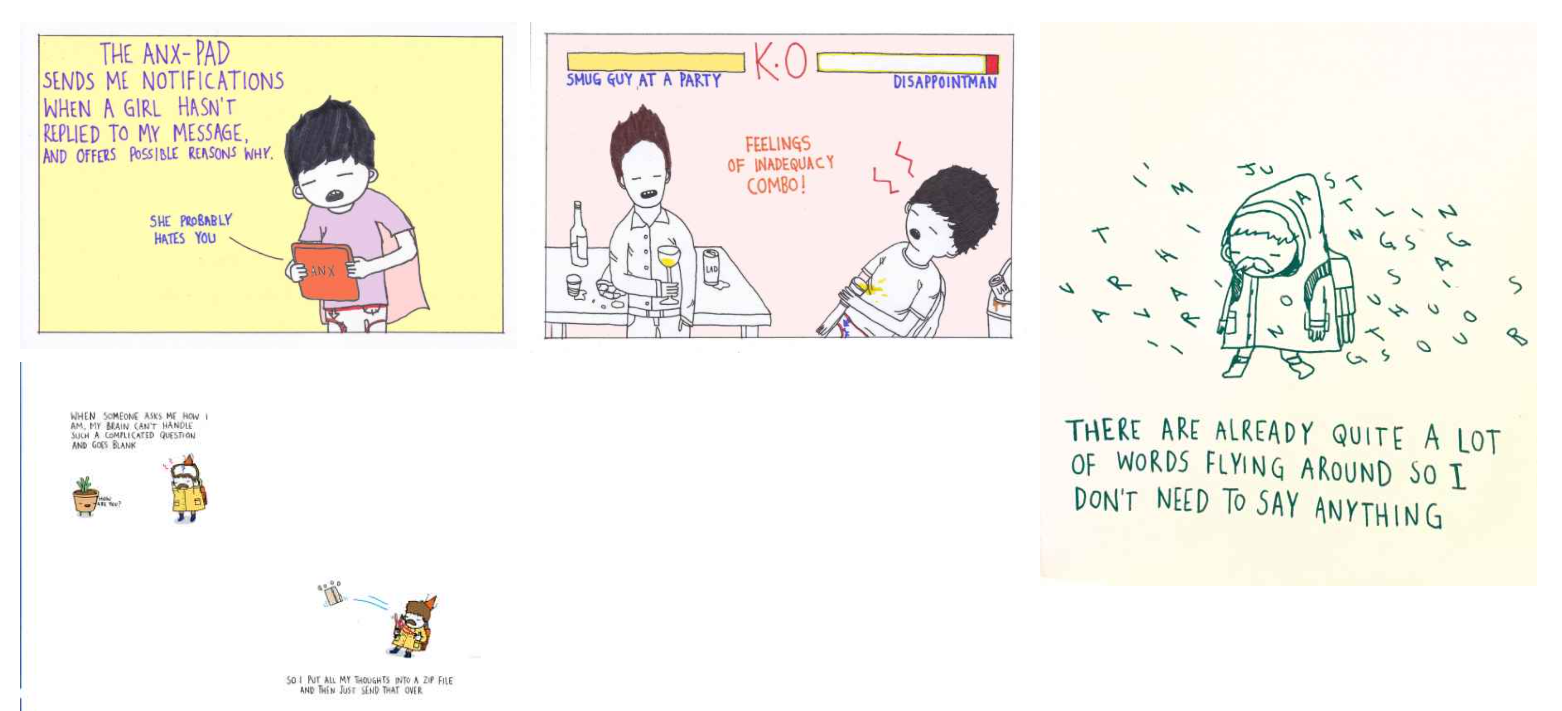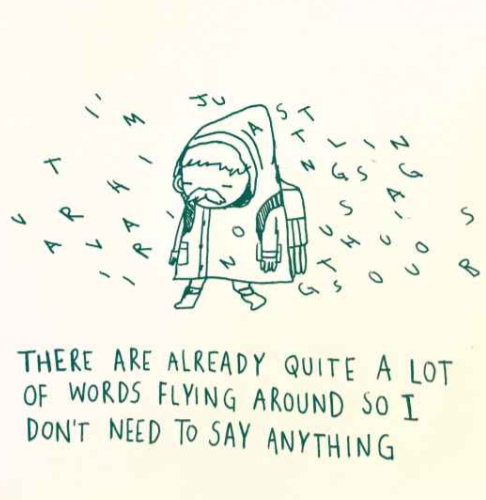“Art gives us new literacies to communicate and tell stories that we may find too difficult to tell verbally.
I think the most difficult stigma to overcome is self-stigma and realisation, but art can create a connection to something that breaks this down and gives us an opportunity to tell different stories. It empowers.”
This meaningful quote about the place of art within mental health discourse was given by Sean McGugan, See Me Scotland’s Community Champion. Here, Sean was explaining the inspiration for All, Entire, Whole, an exhibition that he created in collaboration with the Scottish Mental Health Arts Festival (SMHAF). It was designed to assist participating artists in their own mental health recovery, while also raising awareness for the stigma and discrimination that those with mental health issues continue to face in Scotland.

All, Entire, Whole exhibition poster (2019). All rights reserved to Scottish Mental Health Arts Festival and See Me Scotland.
The 2020 exhibition was delivered entirely online alongside a series of digital events due to the pandemic. As well as showcasing their work on the SMHAF website, each artist provided candid explanations of their own experiences with mental health and how that has an impact on what they create. For example, Chris Sav, a Brighton-based artist, uploaded a video where he discusses how his experiences with depression and anxiety has resulted in the creation of Disappointman, a superhero with “inner demons” which prevent him from getting out of bed or feeling comfortable in social situations such as a party.

A screenshot of the All, Entire, Whole exhibition page which showcases Chris Sav’s work, some of which depict the Disappointman character. All rights reserved to the artist and Scottish Mental Health Arts Festival.
I feel this exhibition is an excellent case study for my colleagues and I as we have decided to base our project on mental health and art – with a particular focus on the mindful properties of art – in light of the collective trauma we have experienced due to the global pandemic, and how culture has been for many of us a means of survival in this unprecedented time.
As mental health is a potentially distressing issue, it is imperative for us to consider how we can document narratives of mental health in a respectful way. All, Entire, Whole is insightful in showing how organisations can successfully balance empowering artists and giving them the autonomy to choose how their emotional narratives are documented while also providing the viewer with an informative, sincere depiction of mental health. Creating a safe space like All, Entire, Whole have successfully done was a major priority for my colleagues and I, and this is one of the reasons why we decided to use language which framed the exhibition around a narrative of general mental health and wellbeing, not mental illness, to avoid potentially triggering any of our visitors. Additionally, we also decided to include a Resources page in our digital exhibition. Here, the visitor can find the contact details of local mental health organisations such as the University’s Counselling Service, Samaritans and Edinburgh Crisis Centre. While clicking on the link of one of these organisational pages takes the visitor away from the digital exhibition page, we thought that this was worth the trade-off if the visitor was able to receive the support that they need.
The mental health benefits of engagement with art, specifically within a heritage setting, are well documented. As many scholars including Ioannides (2017) have pointed out, creating art has been shown to have physical and psychological benefits, such as reducing stress and even contributing to a longer life expectancy. Art therapists often use visits to museum and galleries in their treatment programmes due to the serene atmosphere of these spaces, as well as to meet the needs of those seeking therapy outside of a traditional clinical setting.
Britain is one of the leading centres in making this link between the therapeutic properties of galleries and museums, which is clear through developments in ‘social prescriptions’; forms of treatment which are rooted in non-clinical community support networks and targeted towards improving health and wellbeing. In October 2019, the Secretary of State for Health and Social Care launched the National Academy of Social Prescribing, with the aim of referring almost one million people to social prescription schemes by 2024. One of the largest types of social prescription schemes is ‘Art by Prescription’, where service users can be part of an arts programme which involves group visits to heritage institutions, calming exercises with artworks and drawing classes. A recent example of this is ‘GROW: Art, Park and Wellbeing’, a 10-week ‘creative green prescription’ programme aimed at adult mental health service users that has been delivered by Whitworth Park and Art Gallery since 2015. In this programme, attendees dually engage with green activities outdoors (such as planting and clearing) and creative, arts-based activities indoors relating to the nature theme (such as looking at textured artworks in the Whitworth collections as inspiration for their own studies of parkland trees). This programme has been extremely successful – a study by Thomson et al. (2020) has found that almost all adult mental health service users who took part in this programme reported feeling happier as a result; they enjoyed having a reason to leave the house and meet new people each week and learning new skills in art and gardening amongst likeminded people boosted their self-esteem. While our project is certainly very different – this is a digital exhibition ran by students rather than a lasting events programme ran with the help of healthcare professionals – the overwhelmingly positive response to this project demonstrates the powerful role that engaging with art in museums and galleries can take in an individual’s mental health recovery.
With the meaningful work of All, Entire, Whole and GROW in mind, I hope that our exhibition can similarly provide visitors with the chance to look at art in a way that might improve their mood, provide much-needed escapism, or encourage them to think about mindfulness or talking about mental health in a new light, even if on a much smaller scale.
Bibliography
Anti-Stigma Summer Sessions: Conversation with Chris Sav and Elizabeth Ellis-Huddleston, Facebook video. Available at: https://www.facebook.com/watch/?v=645141446421865 [Last accessed 09/10/2021].
“Glasgow arts festival to tackle stigma around mental health” in Glasgow Times Newspaper, 11th May 2019. Available at: https://www.glasgowtimes.co.uk/news/17633428.glasgow-arts-festival-tackle-stigma-mental-health/ [Last accessed 09/10/2021]
“Visit now: All, Entire, Whole” Scottish Mental Health Arts Festival website. Available at: https://www.mhfestival.com/2020/667-all-entire-whole [Last accessed 09/10/2021]
Scottish Mental Health Festival programme (2019). Available at: https://www.mhfestival.com/images/SMHAF2019/SMHAF19-Programme.pdf [Last accessed 09/10/2021]
Scottish Mental Health Festival programme (2020). Available at: https://www.mhfestival.com/2020 [Last accessed 09/10/2021]
National Academy for Social Prescribing Website. Available at: https://socialprescribingacademy.org.uk/ [Last accessed 09/05/2022].
Ioannides, “Museums as Therapeutic Environments and the Contribution of Art Therapy” in Museum International, 68:271-272 (2017) pp. 98-109.
Thomson, LJ, Morse, N, Elsden, E and Chatterjee, HJ. “Art, Nature and Mental Health: Assessing the biopsychosocial effects of a ‘creative green prescription’ museum programme involving horticulture, artmaking and collections” in Perspectives in Public Health, 140:5 (September 2020) pp. 277-285.



Leave a Reply